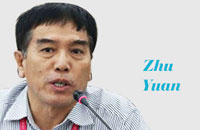Debate: Left-behind kids
(China Daily) Updated: 2011-11-07 07:52A recent widely circulated photograph showing a girl taking care of her baby cousin at a class in a rural primary school in Hunan province reflects the plight of left-behind children. Three experts discuss how their lot can be improved.
Two-way development can solve problem
Shan Jingjing
Large-scale migration of people from rural to urban areas and the fast pace of urbanization have brought about profound and far-reaching changes to China's social economy. According to the sixth national census, 665.5 million people, or 49.68 percent of the total population of Chinese mainland, live in urban areas.
The trend of fast urbanization has been accompanied by worrying facts such as draining of the labor force in the countryside and overcrowding of cities. This means China's urbanization faces problems both in rural and urban areas.
By the end of last year, the number of migrant workers was about 242 million, most of whom had left their parents and children at home in rural areas because of a slew of obstacles, including difficulty in getting hukou (household registration), low income, high housing prices and restraints on their children's education.
While the main labor force moves to work in cities, it leaves an empty demographic structure in the countryside, which comprises the elderly, children and women, as well as vacant houses and uncultivated land.
The about 242 million migrant workers have left more than 50 million children at home in rural areas. On average one out of every four children in the countryside has been left behind by their parents. Many of the left-behind children often live with senior family members and lack proper parental love and care. This harms their education, mental health and character development, because of which some of them go astray. In short, the current situation is worrying.
So efforts have to be made to improve their condition, and they should focus basically on the essence of urbanization, which is a two-way process: rural population and non-agricultural industries moving to cities, and an urban lifestyle and new goods and technologies spreading to rural areas.
In the two-way flow, the countryside has helped urban construction and economic development. And urban-centric sectors are supposed to back-feed agriculture and thus push forward social economic development in rural areas. Urbanization should combine the development of urban and rural areas both, or else it will result in two extremes: cities overcrowded but with alienation and the draining of the countryside, especially its labor force.
A critical step would be to give full play to small towns as important transit points of surplus labor force from rural areas to cities. Towns, as the link between urban and rural economies, can provide helpful guidance to ensure a proper and orderly transfer of rural labor, and also promote distribution of materials and resources. As a result, population pressure in cities can be eased and rural laborers can find jobs in places near their homes.
Basic and vocational education in rural areas should be strengthened, too, to raise farmers' competitiveness. In this respect, we should learn from the successful experiences of Germany and Japan. This is important especially for the left-behind children. Besides, the government should devise policies and regulations to secure a caring, safe and healthy environment for such children to grow up into exemplary citizens.
The author is a researcher at the Institute for Urban and Environmental Studies, Chinese Academy of Social Sciences.











